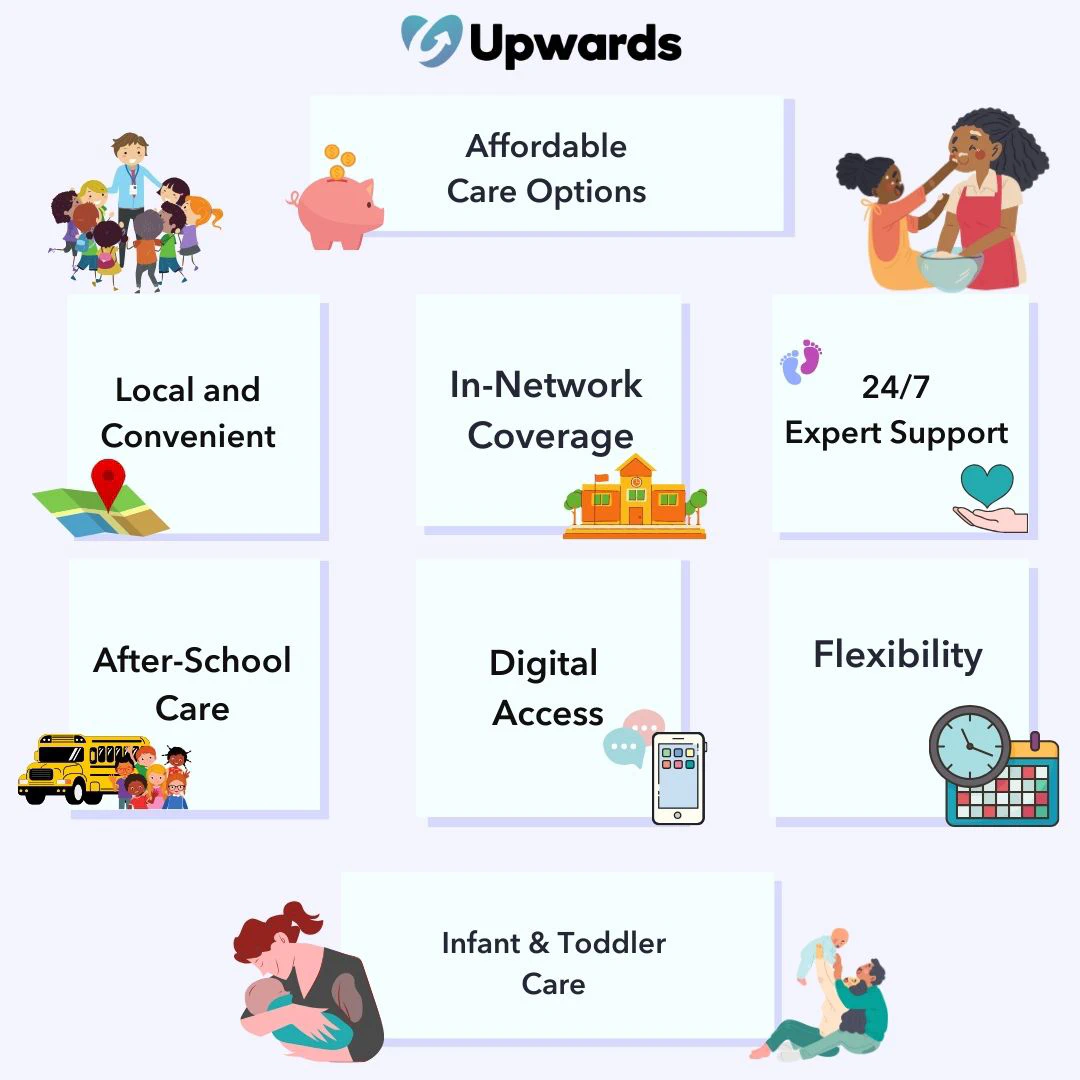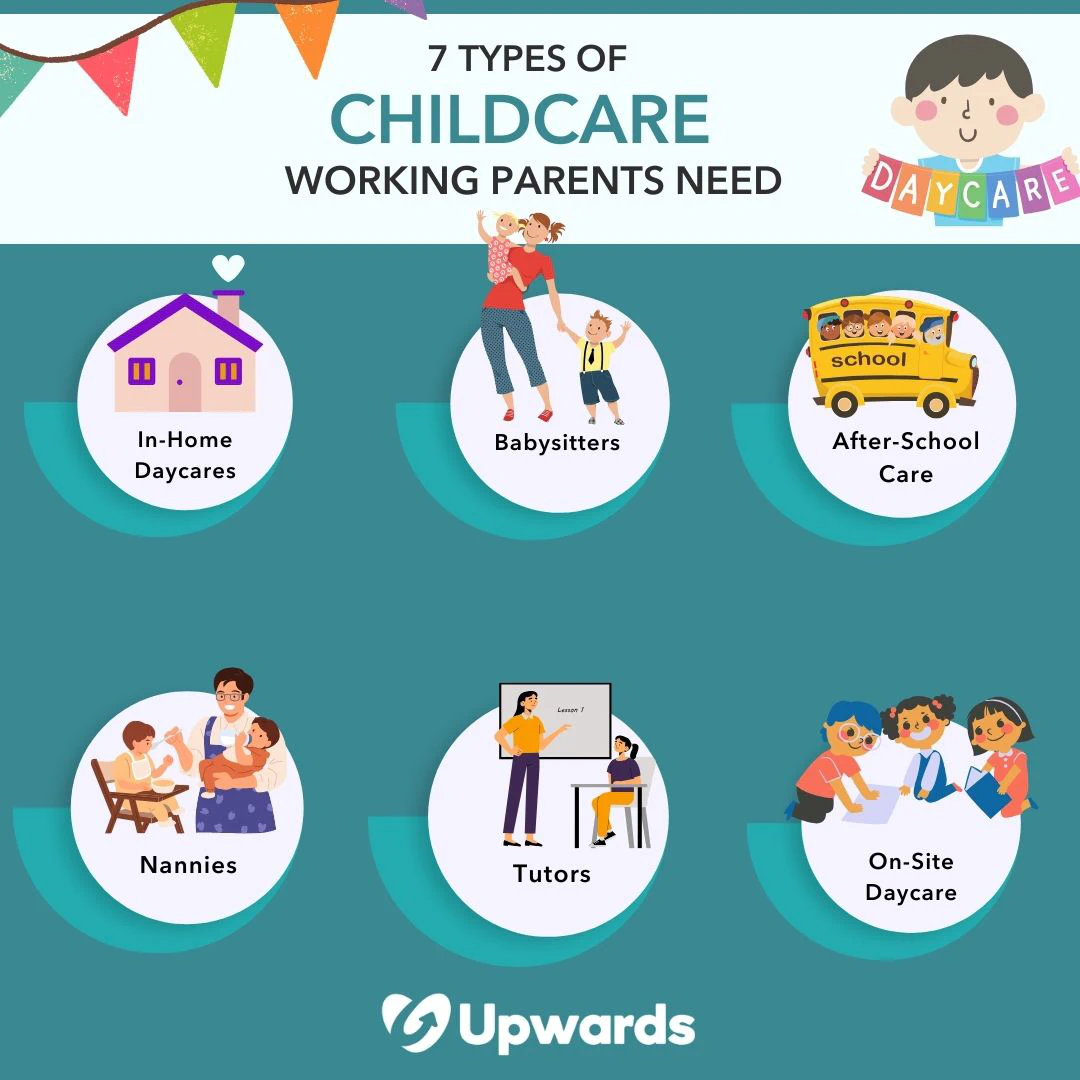
How Does Sponsoring Employee Childcare Benefit Employers?
At-will employment. It’s a two-way street, giving employers leverage and workers an out. When it comes to employee …

“Childcare benefits for employees” are when an employer covers part or all of an employee’s childcare costs through a benefits program.
No matter which term you prefer, these all refer to the benefits of childcare for employees, by employers.
Companies and organizations that offer comprehensive childcare benefits for employees are able to create a supportive atmosphere for their current (and future!) employees. When working families are excited about working, everything is smooth sailing.
But what, exactly, does employee childcare support help with?
HR and benefits professionals are more likely to offer employer-sponsored childcare benefits for employees in 2022 and 2023 than any other year previously — and it’s a growing trend for a reason. Offering employee childcare benefits simply leads to happier, healthier employees.

All families have unique needs when it comes to childcare. However, there are many overlapping requests when it comes to employer-sponsored benefits.

Let’s break each highly-desired employee childcare benefit down a bit further.
Childcare — without the help of an employer benefits program — is extremely expensive. When families have more than one child, those costs tend to skyrocket. Childcare benefits for employees must be affordable so families actually use them.
Traditional childcare centers — such as on-site daycares — do not offer flexible hours. People often ask, “what childcare works best for overnight employees” (think retail employees, hospitality workers, medical professionals, etc.). Often, smaller in-home daycares offer the most coverage.
Childcare coverage in rural areas can be difficult to find, let alone secure. Even in urban areas, overcrowded daycares and long waitlists make it nearly impossible to quickly find care. When offering childcare benefits for employees, it’s important to look for the most flexible options.
Especially as more workers are shifting to remote or hybrid positions, driving to on-site daycares makes less and less sense. Increasingly, employers are looking to offer childcare options located near their working families’ homes.
Did you know one of the top Googled search terms when it comes to childcare is, “childcare near me?” Parents and guardians want to know where to find help. With a dedicated care manager, this load is removed from their shoulders.
Childcare typically begins when a parent or guardian returns to work when the child is still an infant. These employees look for care (including backup care) beginning around the age of 3-months-old. Not all childcare providers will accept babies, so it’s important that employer-sponsored benefits are flexible enough to meet the needs of each parent.
A common misconception is that school-aged children don’t need childcare, but working families are increasingly looking for programs that include after-school hours — usually from 3:00 p.m. until the evening. Again, it’s why employers are always looking for the most flexible employee childcare benefits options.
Working families in 2022 and 2023 are tech-savvy and offering employee childcare benefits that can be managed through an app or easy-to-use website are preferable to systems that require lots of heavy lifting.

So let’s dive in.
Backup childcare (sometimes referred to as “backup care” or “emergency care”) is childcare that is needed but was not planned for in advance. Sometimes regular childcare arrangements fall through, emergencies come up, or a grandparent who watches the child falls ill. Because it’s impossible to plan for life, backup care is one of the top-requested offerings in an employee childcare benefits program.
Backup caregivers come to the employee’s home to provide childcare. Because this is “backup care” (or “emergency care”) this is scheduled last minute.
Childcare assistance is an employer-sponsored benefits program where a designated manager helps assist working parents in finding quality, affordable, conveniently-located childcare providers.
Childcare assistance programs are those that help families pay for the cost of childcare — whether full or partial.
Childcare stipends (also known as childcare subsidies) are a fixed amount distributed to employees by employers to help cover childcare expenses. Most American families struggle to afford childcare. With the help of their employers, working families who receive childcare stipends are able to stay in the workforce.
Employees can use their childcare stipends (also known as childcare subsidies) to pay a full or partial payment to childcare centers, home daycares, nannies, or babysitters.
You may be asking…
In-home daycares, also referred to as home daycares, are care centers set up in a caregiver’s own home. A caregiver providing childcare services out of their home offers some of the most affordable forms of care (including backup care) available due to the inherent lack of overhead costs. This, coupled with the time flexibility, convenience, and low child-to-teacher ratios make in-home childcare one of the best options for working parents.
A babysitter is a type of caregiver who meets with a family in-home to care (including backup care) for children. Sometimes groups of neighborhood children meet together in one home — this is referred to as “nanny-sharing.” Babysitters tend to provide more flexible care, including after-hours, holidays, and backup care.
A nanny is a full-time type of childcare provider who meets with the child in a family’s own home, and who often travels with the family, providing flexible hours and low child-to-provider ratio.
An on-site childcare center is a type of childcare facility typically known as a traditional daycare. These centers typically only accept younger children, including infants, toddlers, and preschoolers.
After-school childcare is any type of program that caters to school-age children outside of school hours. These come in many forms, including in-home childcare providers, or local groups such as The Boys & GIrls Clubs of America and the YMCA.
A tutor is a caregiver who is hired — often in a ratio of one-to-one — to help educate a student. Sometimes, babysitters and nannies double as tutors for the school-aged children they look after.
A daycare center is a facility providing supervision and care for children during the daytime. Traditional daycares are independent brick-and-mortar centers.

First off, why would a company or organization not offer employer-sponsored childcare benefits? Some employers think that glossing over childcare benefits for employees will save the organization money, time, and energy.
The truth is not offering employee childcare benefits actually negatively impacts the bottom line.
How does not offering childcare benefits for employees hurt an organization’s bottom line?
Working parents face serious childcare challenges on a daily basis and inadequate childcare results in a negative effect on their overall productivity.
Any number of employees is the right number of employees to start providing anemployer-sponsored childcare benefits for employees program for your workforce.
Workers who are 100% remote or have hybrid work-from-home flexibility do need help with childcare benefits just like their on-site counterparts.
Children of all ages require childcare — from infants through school-aged children.
You’ll want to find an employee childcare benefits program with flexible schedules, multiple caregiver options, and affordable costs. Read up on offering childcare benefits to rural employees on the Upwards blog.
Starting out as low as $0.73 per employee per month, some organizations can begin offering employer-sponsored childcare benefits to their workforce.
Employers who help cover the cost of childcare (whether full or partial) see reduced absenteeism, lower turnover, increased productivity, and more competitive recruitment when they support their working families with employee childcare benefits.
No, onsite childcare centers are only one form of childcare, and often they can also be too expensive, inflexible, or full/waitlisted. Increasingly, organizations are looking to implement solutions such as in-home daycares, nannies, and babysitters.
Employees need these childcare benefits for employees to be maximally productive. Without comprehensive, flexible, and affordable employer-sponsored childcare benefits, employers pay a substantial cost to replace any workers who are forced to leave the organization.
As many employers now know, providing employee childcare benefits not only helps their working families but organizations as well.
What are the top six ways companies benefit by providing employer-sponsored childcare benefits?

At this time, most employee childcare benefits programs do not include paid parental leave or paid adoption leave.
In many cases, yes! Just so long as the caregiver is a licensed daycare provider — such as an in-home care provider — or a registered nanny or babysitter through a third-party site. Often, this is a great solution for backup care!
Private school tuition is rarely covered through employee childcare benefits. However, many preschools or in-home daycare providers offering curriculum-based childcare accept employer-sponsored childcare benefits.
Current IRS limitations on tax-free dependent care assistance plans are $5,000 annually, or $2,500 per parent if married and filing separately. Assistance over $5,000 is considered taxable income.
Dependent care assistance are recorded in box 10 on an employee’s W-2 form and are treated as an exemption credit with the IRS. This is the same for all forms of care, including backup care.
Many in-home daycares, nannies, and babysitters are not accepting enrollments and or returning children who do not adhere to the CDC’s Operational Guidance for K-12 Schools and Early Care and Education Programs to Support Safe In-Person Learning addressing COVID concerns. Updated information can be found at www.cdc.gov/coronavirus/2019-ncov/community/schools-childcare/k-12-childcare-guidance.html.
Let’s get down to brass tacks. You may be thinking, “What is my organization’s childcare benefits ROI?”
To find the return on investment that employers see on their balance sheet when providing childcare benefits for employees, use Upwards’ free ROI calculator!
The largest childcare network in the United States, providing access to quality, affordable childcare to families nationwide. We support childcare providers in operating sustainable businesses through a technology-based marketplace and partner with government entities to improve access to care. Upwards also helps employers of all sizes offer their employees childcare benefits. Our mission is to help all families care for their children — not just those who can afford it.

At-will employment. It’s a two-way street, giving employers leverage and workers an out. When it comes to employee …

You’re tasked with deciding employee benefits for your organization. So where to begin?
Which benefits do employees want …